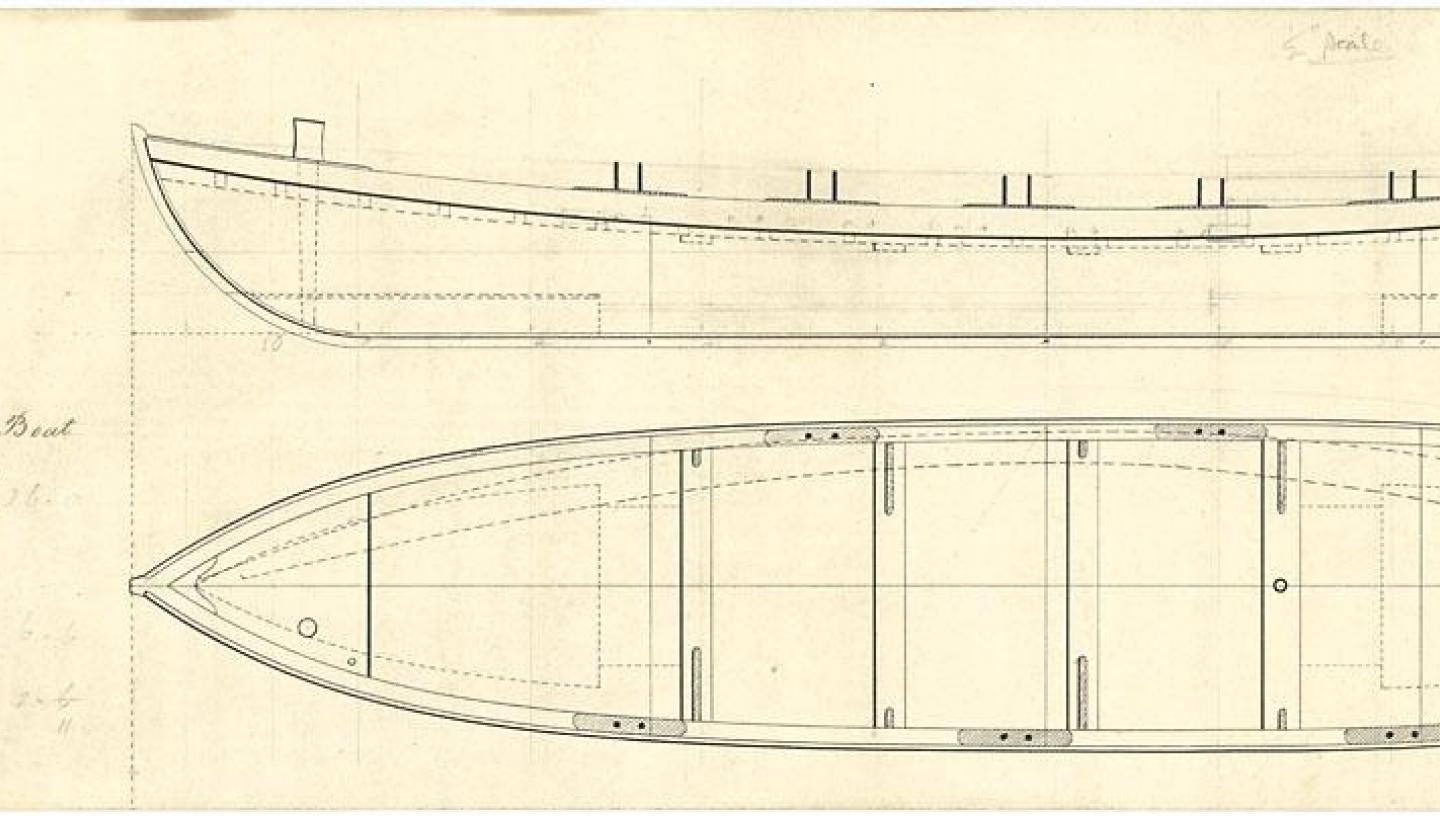
22 Dec 2017
'Whaleboats represent the integration of specially developed commercial boat technology into the Royal Navy'
By Morgan Breene, research intern
Visit the National Maritime Museum
For the past six weeks, I have been at the National Maritime Museum as a student research intern, working on a project on whaleboats and their adoption by the Royal Navy in the nineteenth century as a ship’s boat. The term ‘whaleboat’ refers to double ended boats, usually between 23 and 28 feet in length, that were used extensively in both the Arctic and the Pacific for catching and killing whales. The boats were designed to move both forwards and backwards through the water, were very stable in rough sea conditions, and could be launched and landed through surf. Whaling was a huge industry in both the United States and Britain that produced a number of products in high demand, including clean burning oil and ‘whalebone’ used in women’s corsets.
While the whaleboat as a vessel type was developed for a very specific purpose, the exposure of naval officials to the men and technology of the whaling fleet during the American Revolution and the Napoleonic Wars, in conjunction with its perceived strengths as a design, led to the adoption of the whaleboat into the navy. While the earliest example of a model of a naval vessel with a whaleboat on it in the Museum’s collection at Chatham is dated 1810, whaleboats became most widely used after the 1850s.
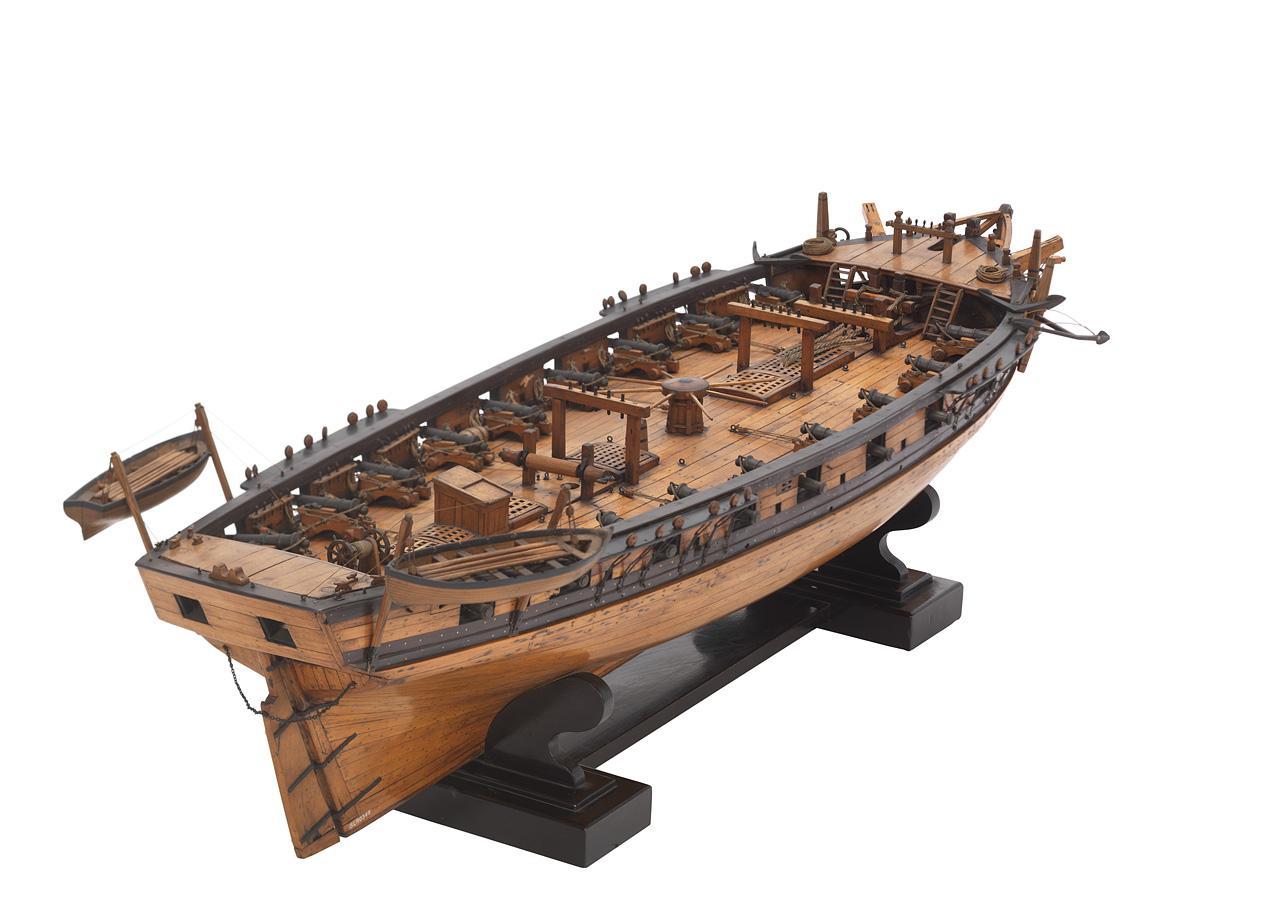
Earlier examples from the 1830s and 1840s relate to specialized applications for which the whaleboat was particularly well adapted - such as the Arctic Expeditions of John Ross and John Franklin, and the West Africa Squadron, tasked with suppressing the slave trade.
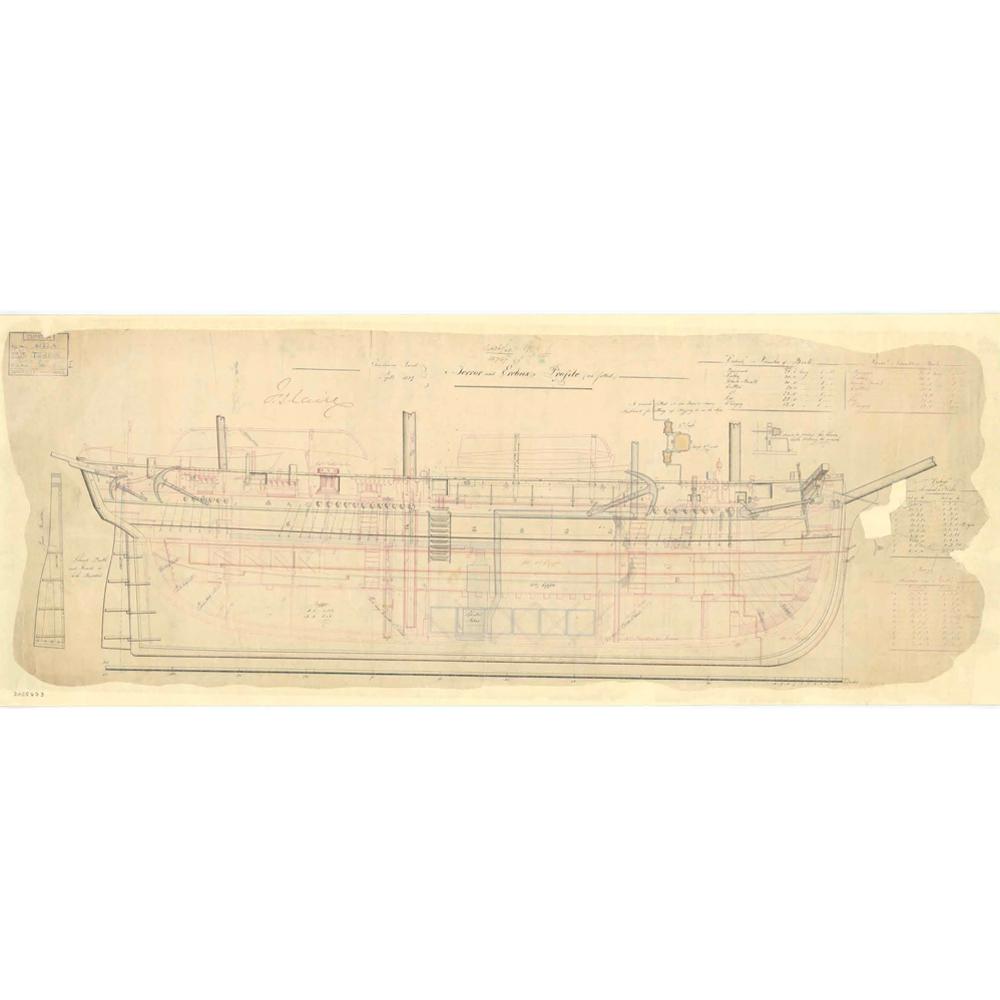
By 1861, the whaleboat had become officially integrated into the navy as a class of ship’s boat, and was most frequently used on smaller vessel types, such as sloops and gun vessels. Naval whaleboats of this period still resembled their whaling ancestor- truly double ended boats, with curved stem and stern posts. These boats could be rowed or sailed, and carried a single removable mast. The Museum’s collection of ship plans contains several of these early whaleboat plans dating to the 1860s.
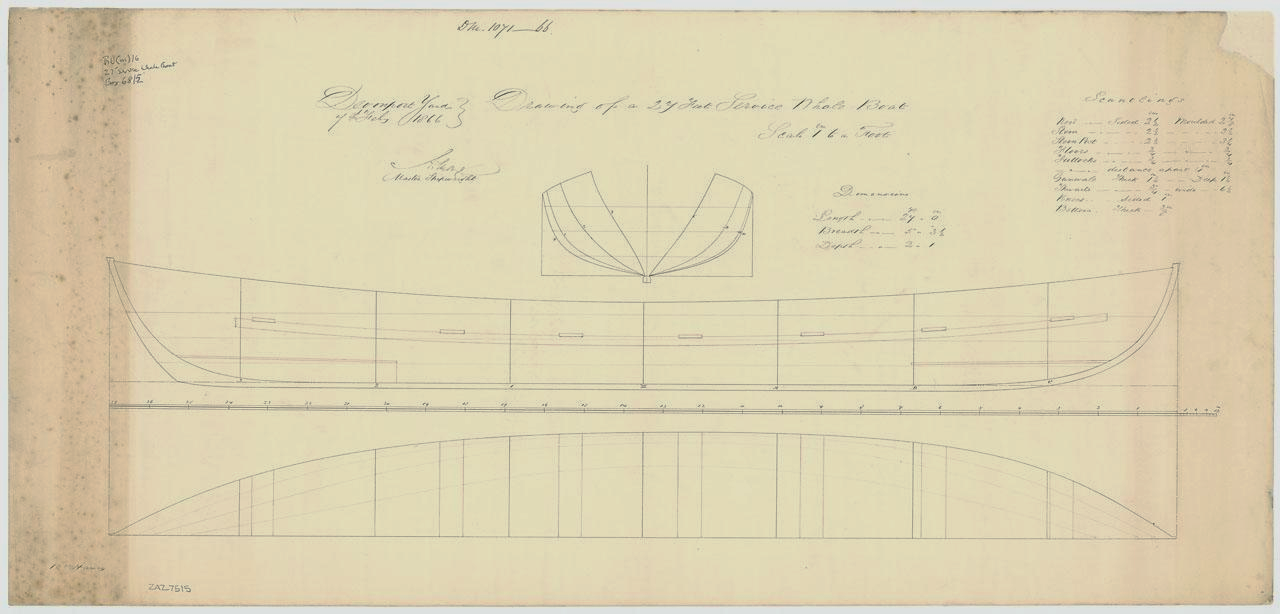
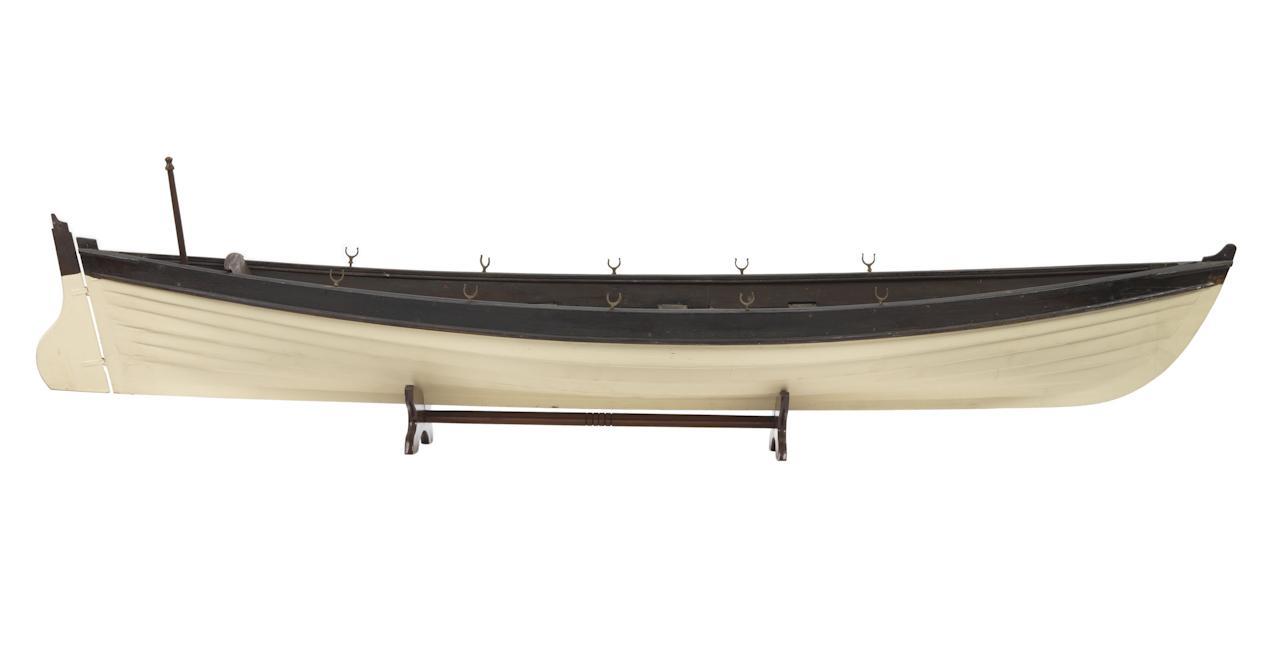
Plans from the 1870’s, however, show a change in hull form introduced by the navy. The whale ‘gig’, while still technically double ended, had a fine, flared stern and an upright stern post at a near right angle to the keel. In 1882 the single mast with lug sail was replaced with a two-masted arrangement with dipping lug sails. The whale gig type was built until 1908, and therefore the distinctive hull form is useful in trying to identify undated plans and models. The Montagu whaler, perhaps the best known example of naval whaleboats, was introduced in 1907, and refers to the rig of the boat - early examples of plans of Montagu whalers show the Montagu rig on boats with square sterns. In 1908, the hull form was changed again, reintroducing the curved stern post.
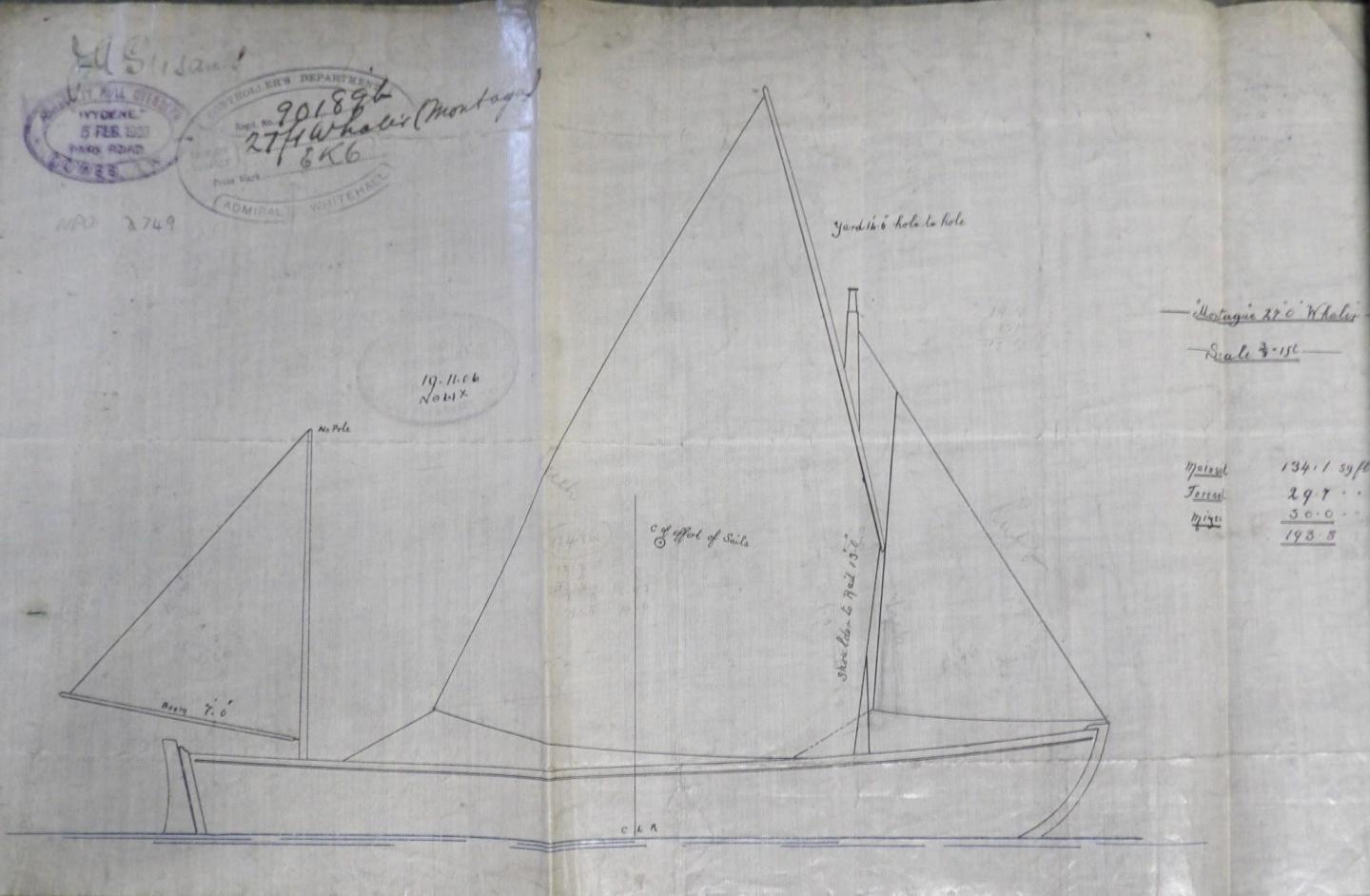
Whaleboats represent the integration of specially developed commercial boat technology into the Royal Navy in the nineteenth century, an important but understudied aspect of naval history. Understanding the circumstances under which naval officers and administrators were exposed to technologies such as whaleboats, and the alterations made to such technologies under naval auspices, can help us gain a broader understanding of the relationships between the navy and non-naval fleets during the nineteenth century, and the contributions made to the navy by other classes of mariner.